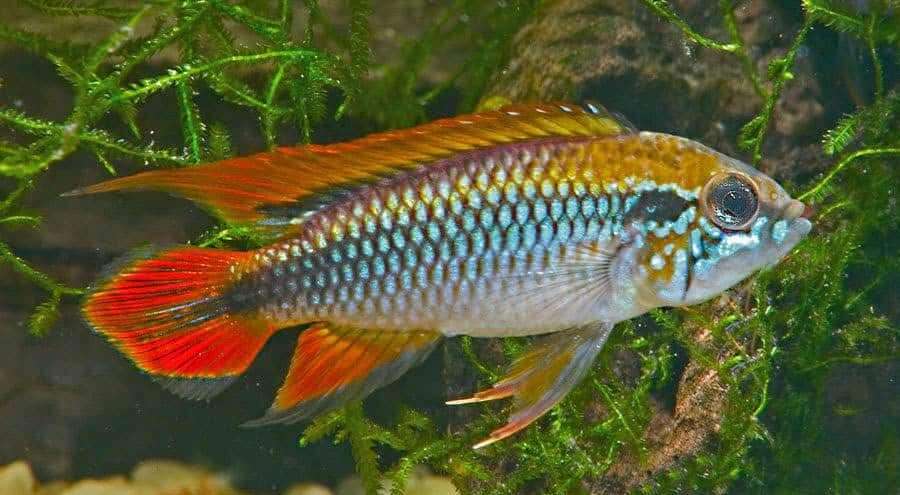
Size
While females only reach a maximum length of around 2 to 2 1/2 inches, males can grow to about 3 1/2 inches (8.9 cm) (6 cm).
Physical Characteristics and Behavior
The colors on male Agassizi Cichlids are more vibrant than those on their captive-bred cousins. In general, the male has a redder upper back and a greener lower back. The males of this species have larger fins and more vivid colors, while the females have a softer yellow hue with patterns similar to the males. The genetic pool is strengthened when a wild-caught individual mates with a captive-bred individual.
Habitat
These plants thrive best in conditions with a pH of 6.0 to 6.5, water hardness of 5 to 8 dH, and temperatures between 26 and 29 degrees Celsius (79 and 84 degrees Fahrenheit).
As Pet

- Care of Aquariums
Perform 10% to 20% water changes on a monthly or biweekly basis, or more frequently depending on stocking levels. As with other cichlids, sickness and death can occur if water quality is neglected. Make sure to thoroughly clean the viewing window and allow any debris to settle before washing. Siphon the substrate with a hose, making sure to get rid of all the debris. Make careful to treat the replacement water and that the temperatures match those of the water in the tank while filling the tank.
Water Changes: Weekly or biweekly, 10% to 20%, depending on tank size and stock level.
- Setup of an aquarium
A 20 gallon minimum tank is advised. They want water that moves slowly to moderately and has good, effective filtration. They thrive in acidic water but require low nitrate concentrations and a pH level that stays within the right range. The ideal tank has mature plants, gentle water, and a pH range of acidic to neutral. Monitor nitrate levels. To achieve the finest colour and health, oxygen levels must also be kept stable. These fish might gradually adjust to somewhat harder, more alkaline water, but they won’t be able to hatch eggs in it. Low to moderate lights and a cover are required for aquariums.
Make a lot of caverns, one for each female’s territory, using a substrate of fine, dark sand, rocks, and pots. Fish will find sanctuary and a place to reproduce in caves made of rockwork or artificial materials like coconuts or clay pots. Make sure substrate or rocks don’t leach into the water and change the pH before utilizing them. Be careful not to use sand that is meant for use in marine tanks because materials like limestone can cause the pH level to increase. Driftwood significantly aids in maintaining a low pH and contributes to the Amazon River’s “tea-stained” appearance.
- 20 gal. minimum tank size (76 L)
- Sand/Gravel Mix Substrate Type
- Low-intensity, subtle lighting is required.
- 73.0 to 81.0 degrees Fahrenheit (22.8 to 27.2 degrees Celsius). Breeding temperatures range from 26° to 29° C (79° to 84° F).
- pH range: 5.0-7.0
- Range of Hardness: 2 to 10 dGH
- Brackish: No
- Moderate water movement
Region of Water: All
- Diet
The Agassizi Cichlid is an omnivore, however its food in the wild is primarily composed of carnivorous benthic invertebrates. They can be fed crustaceans, newly hatched brine shrimp, frozen brine shrimp, insects, insect larvae, and some may consume flakes and pelleted food in the tank. Instead of giving a huge amount of food all at once, provide 2 to 5 little pinches of food throughout the day. This will maintain the water’s high quality for a longer period of time. Vitamins and supplements added to fish food are beneficial to all fish.
Table





